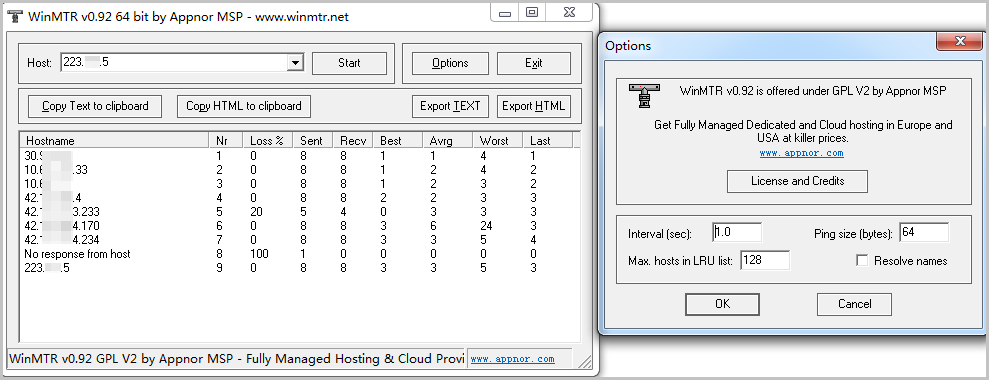This topic describes how to troubleshoot timeout errors.
Check network connectivity
Select one or more application servers or machines in the same network environment. Perform the following steps on these servers or machines:
Submit the execution results
After you check network connectivity, enter the execution results in the feedback form and send the form to your account manager.
| Time when network diagnostics are performed + Time zone | Example: 2021-01-28 09:13 UTC+8 | |
|---|---|---|
| Command | Purpose | Execution result |
| curl ifconfig.me | Obtain the public IP address for outbound traffic | Example: 192.0.2.0 |
| ping {Destination domain name} or ping {Destination IP address}
Example: ping dysmsapi.ap-southeast-1.aliyuncs.com |
Check network connectivity |
Example: 64 bytes from 192.0.2.125: icmp_seq=0 ttl=33 time=67.357 ms 64 bytes from 192.0.2.125: icmp_seq=1 ttl=33 time=65.746 ms 64 bytes from 192.0.2.125: icmp_seq=2 ttl=33 time=66.366 ms 64 bytes from 192.0.2.125: icmp_seq=3 ttl=33 time=65.833 ms 64 bytes from 192.0.2.125: icmp_seq=4 ttl=33 time=65.817 ms 64 bytes from 192.0.2.125: icmp_seq=5 ttl=33 time=66.308 ms 64 bytes from 192.0.2.125: icmp_seq=6 ttl=33 time=65.916 ms ... ... |
| mtr --no-dns {Destination IP address or domain name}
Example: mtr --no-dns dysmsapi.ap-southeast-1.aliyuncs.com |
Check the response time of each node and the packet loss rate |
Example: HOST Loss% Snt Last Avg Best Wrst StDev xxx.xxx.xxx.xxx xx xx xx xx xx xx xx xxx.xxx.xxx.xxx xx xx xx xx xx xx xx ... ... |
Description
| HOST | Loss% | Snt | Last | Avg | Best | Wrst | StDev |
|---|---|---|---|---|---|---|---|
| The IP address and domain name of the node | The packet loss rate of the node | The number of packets sent per second | The last round-trip delay (RTD) | The average RTD | The minimum RTD | The maximum RTD | The standard deviation |
For more information about how to use the MTR tool and analyze the execution results, see How to use the Linux mtr command or mtr(8) - Linux man page.
